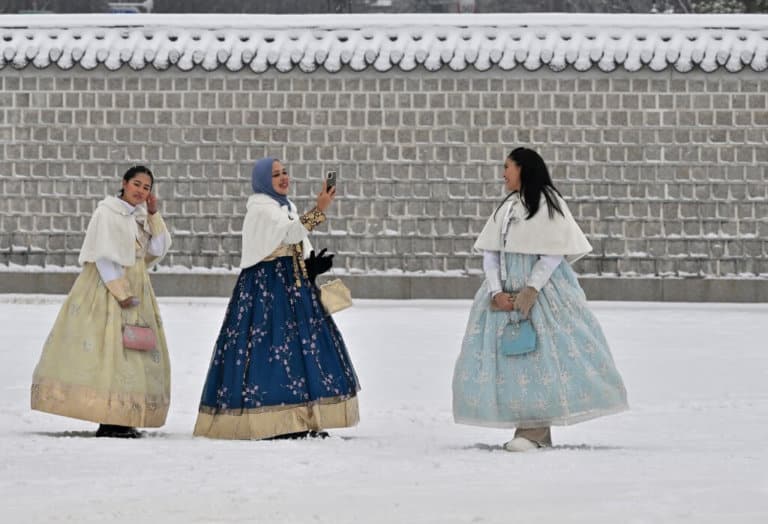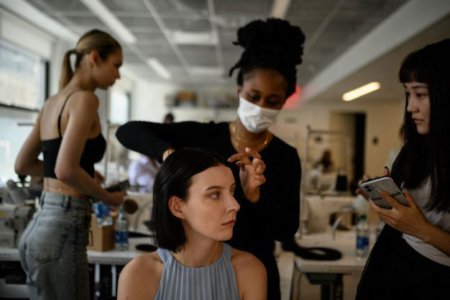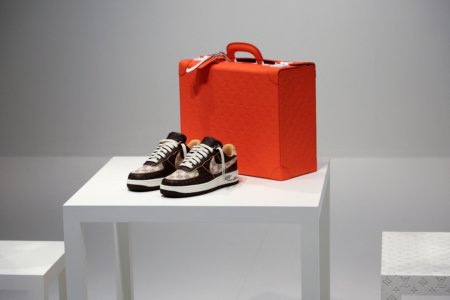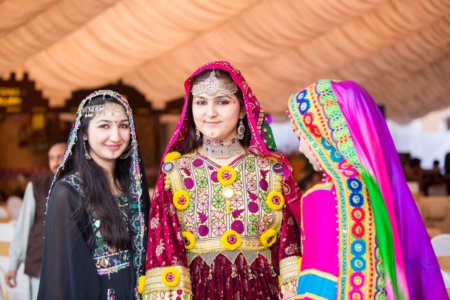
Fashion trends are a big part of uni. From a football team’s sports kit to the indie kid’s band T-shirts, what you wear says a lot about who you are and the world you live in.
For international students, fashion often tells a story of not just who you are now but how your culture expresses itself.
From the intricate sarees of India to the graceful Buba of Nigeria, our traditional wear reveal our culture and identity. It also helps connect us with home, even when we are miles away.
“The cultural impact of our international community is vital to our fashion school,” Sarah Gresty, BA fashion course leader at Central Saint Martins told Dazed when the UK government decided to halve the amount of student visas in 2016.
“Anything that would jeopardise the diversity and the opportunities here for international staff and students would be hugely regressive for us as a department.”
Fashion trends and cultural appropriation

International students have a huge cultural impact on fashion trends, especially at fashion schools. Photo: Lillian Suwanrumpha/AFP
International students who became fashion icons
There isn’t a right or wrong in fashion, but if you’re travelling to a country where clothing is cultural significant, you should be aware of cultural appropriation.
A more famous example of cultural appropriation in fashion includes Gucci’s listing of the the turban as an accessory on their website.
Just remember the only thing separating appropriating and appreciating a culture is your intention.
If you need some inspiration or are looking for fashion role models, we’ve got you covered.
We’ve scoured the web to source for international students who studied fashion and fashion graduates — who are taking the world by storm with their unique designs.
1. Peggy Gou
View this post on Instagram
This South Korean DJ studied at the London College of Fashion. Fresh out of university, Peggy Gou’s creative instincts led her to become an editor for Harper’s Bazaar Korea, shortly before she made a name for herself in the music industry.
In 2019, she launched Kirin, a streetwear label which made its debut at Paris Fashion Week. She also recently started a separate line Peggy Goods.
2. Chen Peng
Male fashion designer Chen Peng grew up in Jingdezhen — China’s “Porcelain Capital” and pursued a Master’s in Menswear Fashion Design Technology at the London College of Art.
Chen drew inspiration from his thin body size, creating designs and outfits that focused on one-sized fashion. His designs are suitable for both oversized and skinny individuals.
Graduating at 24, Chen founded his London-based fashion brand CHENPENG, with the puffer jacket as the label’s signature.
The brand produces clothes, shoes and hats stocked internationally in over 70 boutiques, retailers and department stores.
3. Terrence Zhou
Wuhanese fashion designer Terrence Zhou transferred to the Parsons School of Design in his sophomore year and spent a year on exchange study at Central Saint Martins to study fashion design.
Zhou wants to do more than design clothes — he wants to connect his audience with his work. His fashion pieces are edgy and sculptural — which have certainly caught the public’s attention.
Zhou’s out-of-this-world designs have been featured in fashion magazines and have been worn by many celebrities.
3 fashion trends started by Blacks
From hip-hop music to sneaker culture, the US has a rich African-American history. Black culture has been a pioneer in fashion and beauty around the world for decades, yet it often goes unacknowledged.
This Black History Month, let’s give these fashion trends the recognition they deserve:
1. Hoop earrings
Hoop earrings first gained popularity in the 1980s among middle- and lower-class African American and Latina women and are used as a symbol of femininity, resilience and strength.
Callia A. Hargrove, Teen Vogue’s social media editor has always seen hoops as an extension of herself (she is an African-American woman).
“Communities of colour have always embraced [hoop earrings], but with an understanding that outside of the comforts of our communities and families, they are seen differently, in a negative light. But knowing that, wearing hoops in those settings almost feels like a form of activism.”
2. Acrylic nails

Acrylic nails were seen as a sign that you belonged to a lower class. Photo: Brad Barket/ Getty Images North America/Getty Images via AFP
Believe it or not, the middle-class White society used to sneer at acrylic nails as it was considered a sign that you were from a lower class.
The sentiment stemmed from the idea that if you couldn’t grow your own nails long enough to paint, that must be because you were working class.
Donyale Luna (the first Black woman on the cover of Vogue in 1966), Diana Ross, and Millie Jackson all wore acrylics.
It wasn’t until the 1980s that Florence Griffith-Joyner aka Flo Jo (a former nail tech herself) won Olympic gold brandishing six-inch multicolour nails — a fact mentioned more often than her athletic prowess.
Nail art and acrylic nails are among the fashion trends picked up by famous celebrities such as Cardi B and Nicki Minaj.
3. Sneaker culture
Sneakerheads, did you know sneaker culture started in the 1970s when Adidas released their Samba design?
The culture was further defined by an underground sneaker culture and the emergence of hip-hop.
The second wave of the phenomenon began in 1984 with the launch of Nike Air Jordans.
And today, sneaker culture and the sneaker industry as a whole have pioneered as fashion trends.
Check out the video below about the evolution of sneaker culture.










